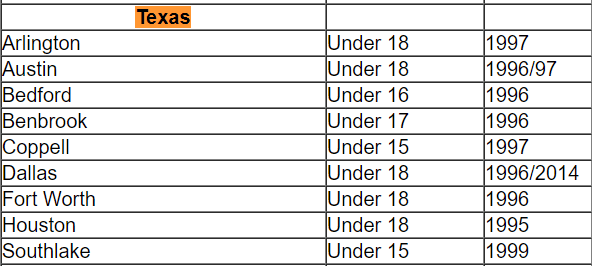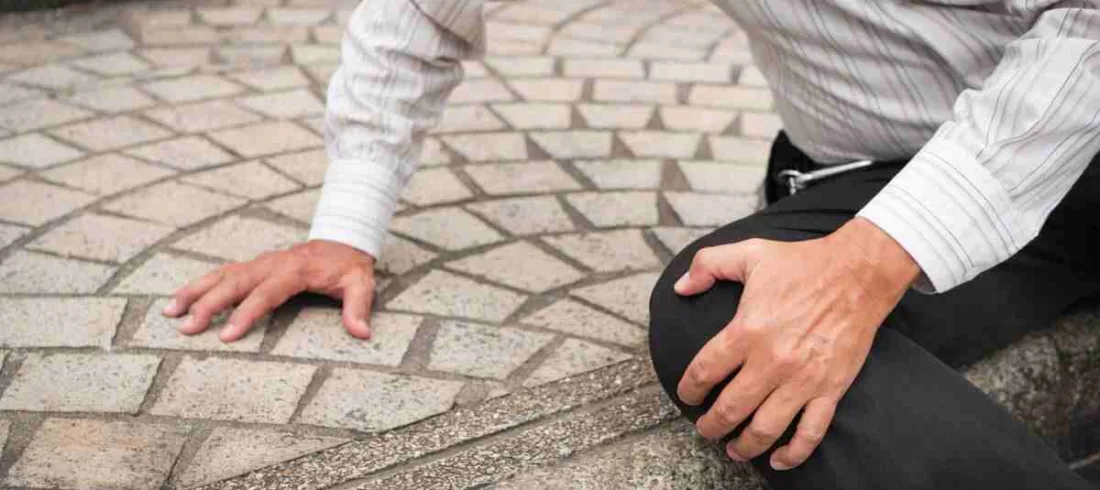What you need to know about Bicycle Helmet Laws in Texas
At a national level, as reported by the National Highway Traffic Safety Administration (NHTSA) in 2017, 783 bicyclists were killed in traffic accidents in the United States and the number of bicyclist injuries was an estimated 49,000. In 2016, there were 840 cyclists killed in motor vehicle traffic crashes in the United States, an increase from 829 in 2015. Cyclist deaths accounted for 2.2 percent of all motor vehicle traffic fatalities. There is no federal law in the U.S. requiring bicycle helmets. The states and localities below began adopting laws in 1987. Most are limited to children under 18, but there are 49 all-ages laws, broken out on our all-ages page. At present, 22 States including the District of Columbia have state-wide laws, and more than 201 localities have local ordinances.
Currently, Texas does not have a statewide helmet law. As such, there are no state laws requiring any bicyclist of any age in the state of Texas to wear a bicycle helmet. In fact, it is legal for all persons of any age to operate a bicycle without wearing a helmet unless otherwise provided by a municipal regulation. However, cities such as Southlake, Coppell, Dallas and Ft. Worth have passed mandatory helmet laws for children under 18. It is still recommended, though, that all bicyclists wear a helmet every time they are on a bike.
The National Highway Traffic Safety Administration (NHTSA) view helmets as: “the single most effective way to reduce head injuries and fatalities from bicycle crashes.” In fact, studies have shown that wearing a helmet can reduce your risk of a serious brain injury and death because during a fall or collision, most of the impact energy is absorbed by the helmet, rather than your head and brain. According to a major study of bike helmet use around the world from more than 64,000 cyclists, helmets reduce the risks of a serious head injury by nearly 70%. The study also found neck injuries are not associated with helmet use and cyclists who wear helmets reduce their chance of a fatal head injury by 65%. For this reason, many cities in Texas have passed their own laws requiring bicyclists to protect themselves by wearing a helmet when on their bike.
Moreover, the safety benefits of helmet use seem to be more pronounced for children: tests on children’s bicycle helmets show helmets offer up to 87% reduction in the acceleration experienced by the skull during an impact and can help the skull resist forces up to 470 pounds in a crush accident. According to a US study helmets cut the risks of severe traumatic brain injury by half, when riders suffer a brain injury. The report, in the American Journal of Surgery, also concluded that riders with helmets were 44% less likely to die from their injury, and 31% less likely to break facial bones. There is no doubt helmets cannot resist substantial impact and cannot save everyone. Nevertheless common sense suggests surrounding your head with some degree of protection must offer some cushioning from head impact – a view which neurological studies definitely support.
There was a time when the City of Dallas passed a law that required cyclists of all ages to wear a bicycle helmet. Dallas’ bike helmet ordinance which required all cyclists to wear a helmet was passed in 1996 as a way to improve cycling safety. However, in June of 2014, the Dallas City Council partially repealed its bicycle helmet ordinance. Officials debated for weeks whether to loosen the requirements as a way to encourage more cycling and launch a bike sharing program. They reached a compromise on loosening the regulations – settling on a requirement that bikers ages 17 and younger wear helmets – officials stressed that they still want cyclists to take safety precautions. As a result in Dallas the law now only requires those under the age of 18 to wear a helmet while on a bike. The fine for a first-time offense is $10, though court costs can tack on an additional $71 to the bill.
As for minors riding their bikes on public property such as streets, roads, and trails, the helmet requirement does not apply to private property. When a child is riding their bike at their own house or in a friend’s driveway, they are not required to wear a helmet. However, if they bike on public property, the law requires that they wear a helmet.
Below is a list of current cities that have that similar bicycle helmet requirement laws:
The Texas Legislature has made multiple attempts to enact statewide laws requiring everyone of all ages on a bicycle to wear a helmet. Likewise, in 1999 and 2003, lawmakers tried to establish a statewide law requiring children, under 18 or under 15, to wear a bicycle helmet. To date, these attempts have failed and the law stands as is.
While not officially mandated by state laws, it is highly recommended that everyone, adults and children alike, always wear a bicycle helmet while on a bike. In fact, the National Highway Traffic Safety Administration (NHTSA) recommends that “everyone – at every age – should wear bicycle helmets.”
Unfortunately, some drivers do not always watch for cyclists on the road, and distracted driving can lead to horrific bicycle accidents. In an accident contest between a bicycle and a car or a truck, in every instance, the cyclist will lose as he/she has very little protection around them if
they get into an accident. A proper helmet is one of the few things a cyclist can rely on to help keep themselves safe.
If you or a loved one is injured in a bicycle accident, please do not hesitate to contact Chandler | Ross Injury Attorneys to see how we can help you. Contact Us now at (940)-800-2500 or support@chandlerrosslaw.com to schedule your free personal injury case evaluation and consultation.



